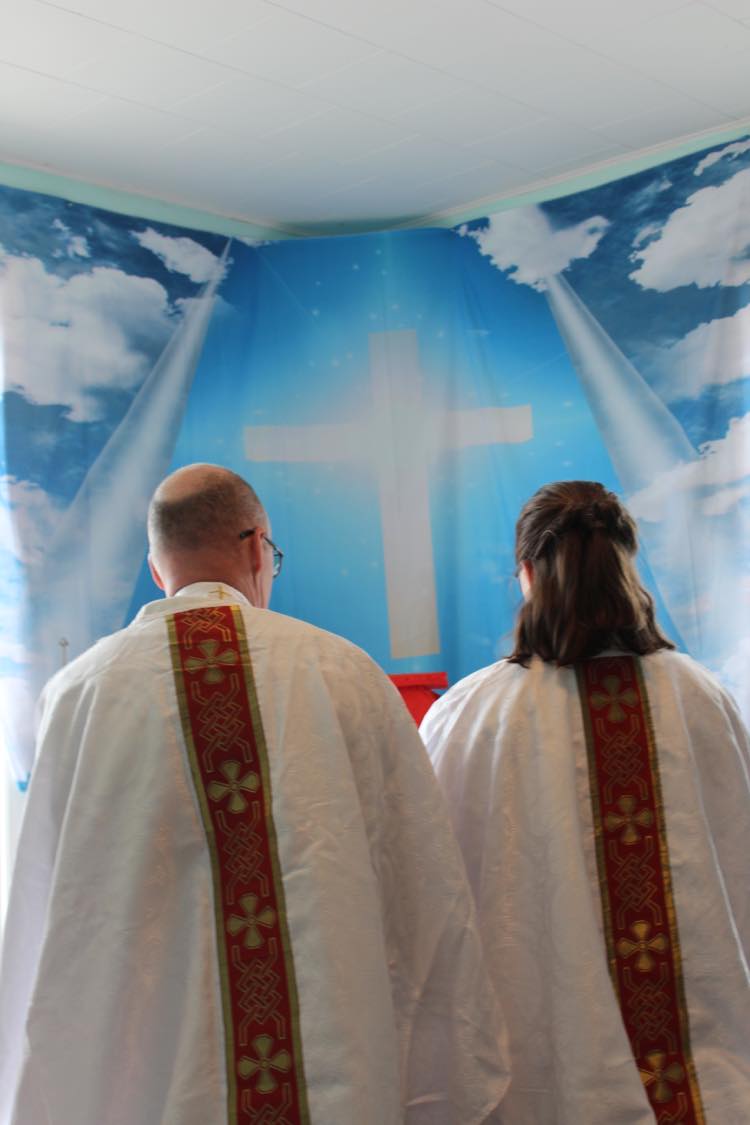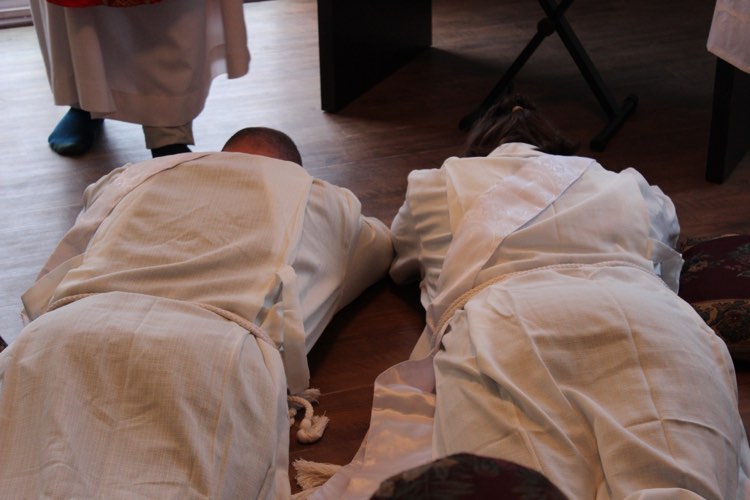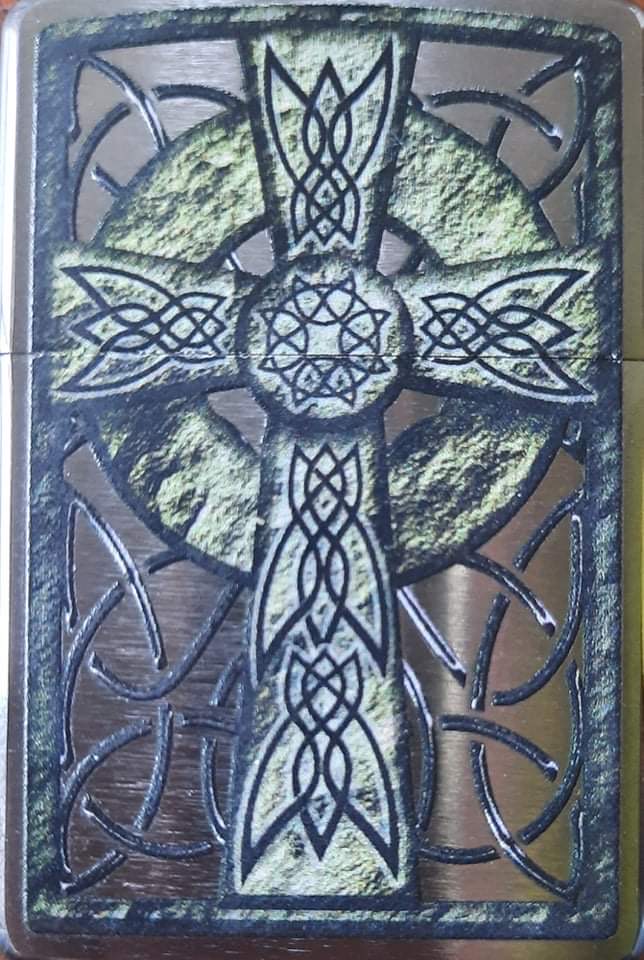- Home
- simply catholic
- The Catholic Rosary
Simply Catholic and Welcoming You
The Catholic Rosary
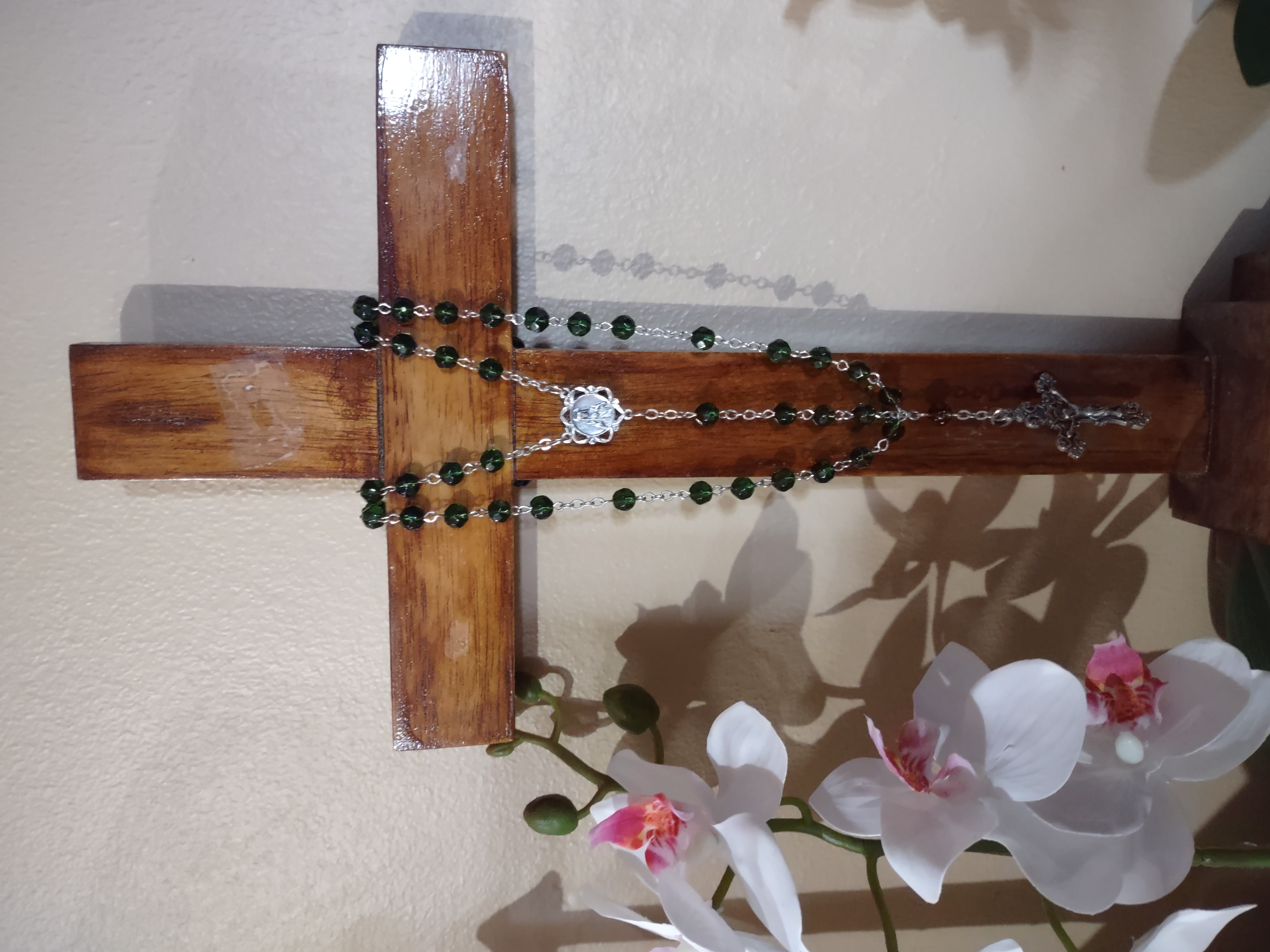
A Rosary Hanging Over a Wooden Cross
The history of the Catholic Rosary is rooted in medieval traditions and is linked to the preaching of Saint Dominic. While the exact origins are debated, the Rosary is widely believed to have emerged gradually over several centuries, with its development linked to the practice of praying psalms and the growing devotion to Mary. St. Dominic is credited with promoting the Rosary and encouraging people to pray it, particularly during the time of the Albigensian heresy.
Let's clear up some misconceptions first. The Catholic Rosary is a form of devotional prayer. It is not worship of Mary. People get confused. Catholics use statues, beads and other ‘aids’ to help focus on prayers or to keep count on the beads so we can focus on the prayers and not on counting.
These things are aids for our praying. We do not worship them (Idols) nor do we worship Mary or any of the other saints. We believe in the Communion of Saints. The dead are not lost to us. They, having already proven their closeness to God and the power of their prayers are thought to have a better reception to their prayers.
Also, "where two or three are gathered together in my name, there am I in the midst of them" comes from Matthew 18:20, promising Jesus' presence among believers when they gather in his name. If we are praying alone yet invoke the presence of one or more saints then we become “two or three” and then Jesus is right with us. Lending the probability of better outcomes to our prayers.
With the help of the saints we are then literally in the presence of Jesus!
This is why we pray for saints to intercede for us or join us as we pray. We worship only God. We just need not do it alone.
What Is The Catholic Rosary

A Rosary Laying on a Table
The Catholic Rosary is a prayer devotion involving the use of a string of 59 beads, where each bead represents a prayer. While the Rosary itself is a prayer tradition, not a direct statement from Mary, it includes invocations that address Mary as "Holy Mary, Mother of God, pray for us sinners". The Rosary also incorporates the "Hail Mary" prayer, which directly addresses Mary, calling her "full of grace" and praising her as the mother of Jesus.
A traditional Catholic rosary has 59 beads because it consists of 5 decades of 10 beads each (for the ten Hail Mary's), plus a few additional beads for the Our Father and Glory Be prayers, and a cross.
Here's a breakdown:
Invocations:
The Catholic Rosary includes prayers that address Mary as "Holy Mary, Mother of God, pray for us sinners now and at the hour of our death. Amen".
Hail Mary:
The core prayer of the Rosary, "Hail Mary, full of grace, the Lord is with thee; blessed art thou among women, and blessed is the fruit of thy womb, Jesus. Holy Mary, Mother of God, pray for us sinners, now and at the hour of our death. Amen," directly addresses Mary and praises her.
Mysteries:
The Rosary is divided into "mysteries" (Joyful, Sorrowful, Glorious, and Luminous), each focusing on specific events in the life of Jesus and Mary. While the Rosary itself is not a statement from Mary, the meditations associated with the mysteries reflect on events related to her and her son.
Glory Be:
After each decade of Hail Mary's, the Rosary includes a "Glory Be" prayer, which praises God for the Holy Trinity.
The Use of Beads When Praying
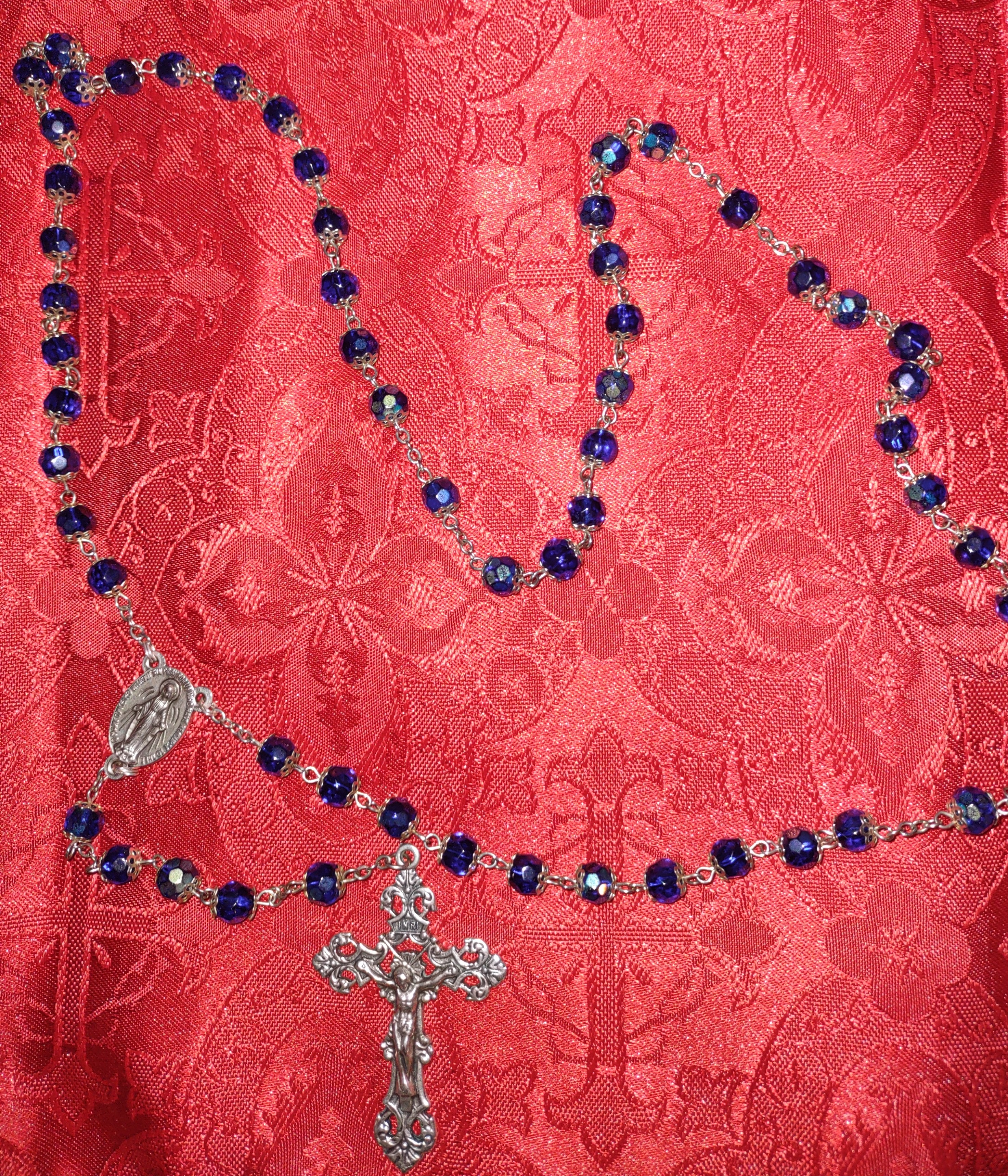
A Blue Rosary on a Red Cloth
Catholics were not the first to pray with beads. And while the exact origin of prayer beads is unknown, men and women of many faiths and cultures (Hindus, Greeks, Buddhists, and more) have (and do) use beads to pray. In fact, the word bead in English is actually derived from an Old English word bede that means prayer.
The use of prayer beads almost universally is to allow the person to keep track of the number of prayers that have been said, while at the same time focusing on the deeper meaning of the prayers themselves. Beads were used by monks and pilgrims to count prayers, including the Psalms and other prayers addressed to Mary.
Today, Roman Catholics use a rosary made up of 59 beads. The 6 large beads are used for praying the Our Father prayer, and the 53 smaller beads are used for praying the Hail Mary prayer. Other prayers of the rosary include the Apostles’ Creed, the Glory Be, and the Hail, Holy Queen.
There are 5 decades, or groups of 10 small beads, that make up the main portion of the rosary.
Origins and Development of The Catholic Rosary
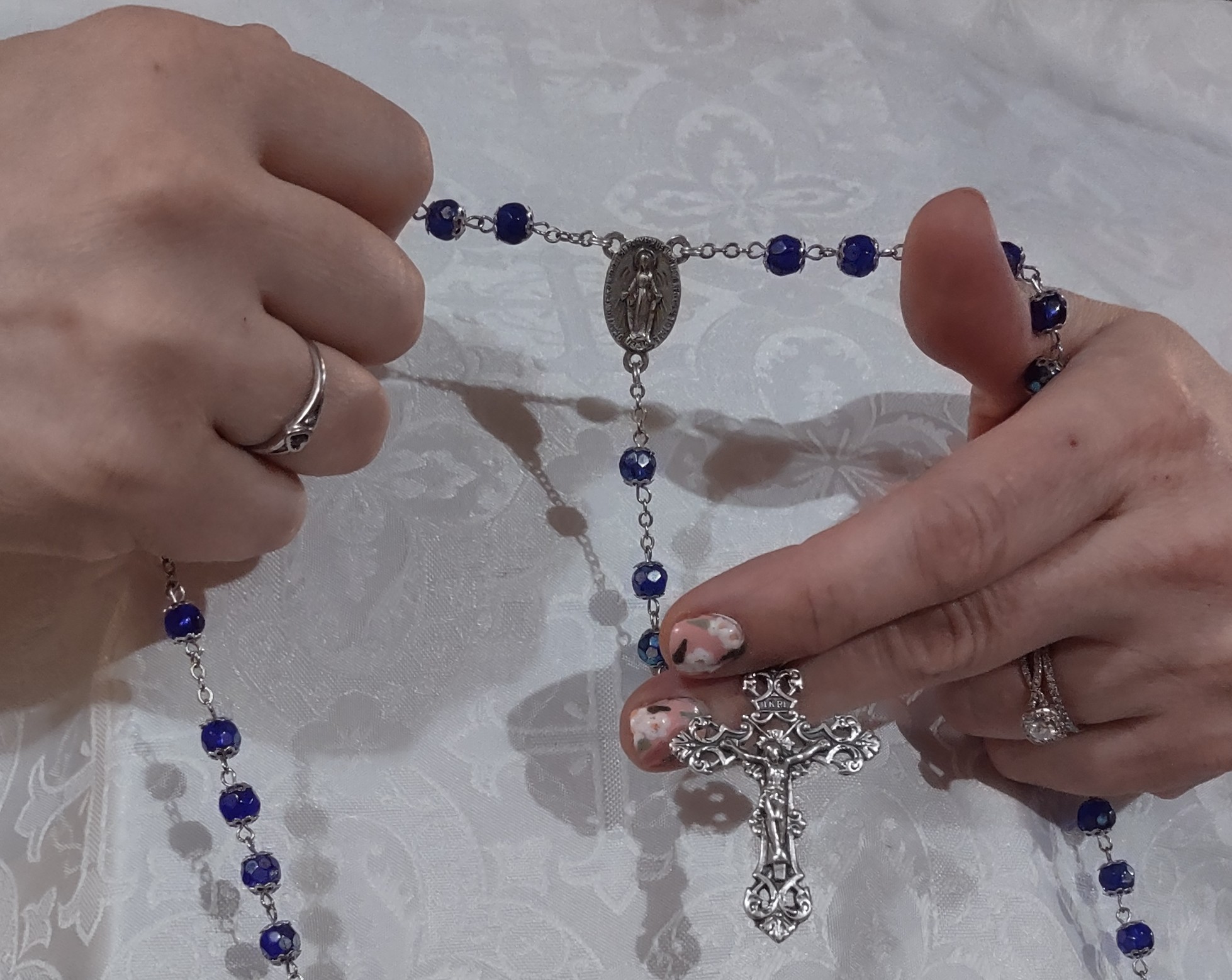
A Woman's Hands Holding a Rosary
The Story of St. Dominic
It is widely believed that in 1214 St. Dominic had a vision of Mary. She is said to have presented him with the catholic rosary, both the beads and the prayers to be prayed.
Dominic had a tremendous devotion to Mary and the rosary, which he promoted wherever he traveled to preach. He encouraged Catholics to gather in small groups to pray together what was an early form of the rosary together. These were quite possibly the first expressions of the prayer groups and small group communities that are still having a powerful impact today.
Over time, the Catholic Rosary became associated with the Dominican Order, and the tradition of praying ten Hail Mary's in each decade of the Rosary became the norm. This practice was likely influenced by the fact that the Dominicans were known for their devotion to the Mother of God
Tradition holds that Our Lady appeared to St. Dominic and presented him with the Rosary, encouraging its use as a weapon against heresy and a means of conversion.
Development and Evolution:
The Rosary gradually evolved, incorporating different mysteries (events from the life of Jesus and Mary) and evolving from a simple string of beads to the prayer we know today.
The Mysteries of the Catholic Rosary
The mysteries of the rosary were introduced by Dominic of Prussia sometime between 1410 and 1439. This gave each decade of the rosary a unique quality. Each mystery leads us to ponder very specific events in the lives of Jesus and Mary and the lessons they hold for our own lives today.
There were originally three sets of mysteries: the Joyful Mysteries, the Sorrowful Mysteries, and the Glorious Mysteries.
On October 16, 2002, almost 600 years after the original Mysteries of the rosary were established, Pope John Paul II proposed adding a new set of mysteries called the Luminous Mysteries (the Mysteries of Light).
Official Recognition:
The official recognition of the Rosary within the Catholic Church was solidified by Pope Pius V in 1569, through the papal bull Consueverunt Romani Pontifices.
Modern Use:
The Catholic Rosary continues to be a beloved prayer in the Catholic Church, used for various purposes, including personal devotion, meditation, and reflection on the mysteries of faith.
The 15 Promises of Our Lady to Those Who Pray the Catholic Rosary
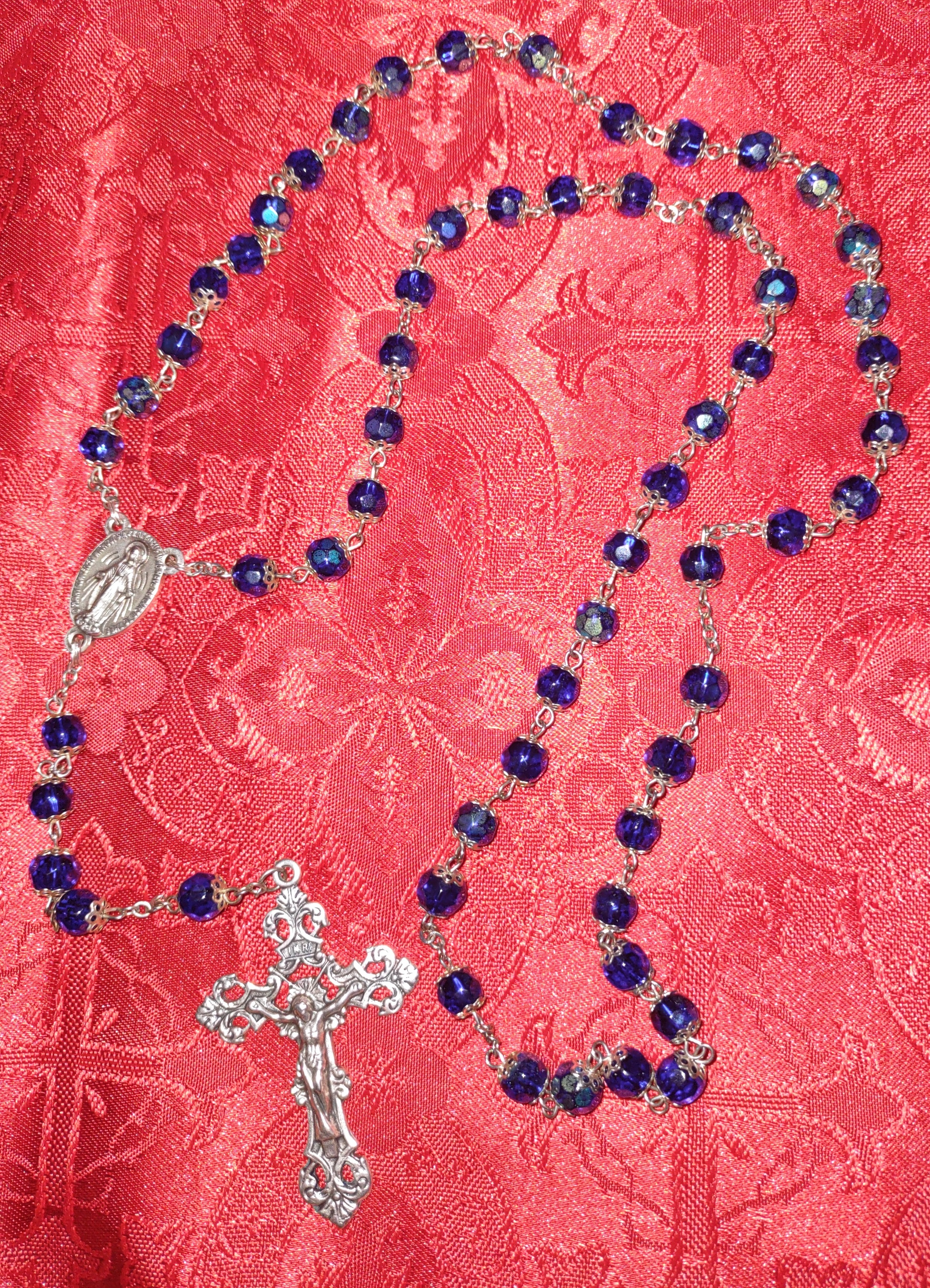
A Blue Rosary On a Red Cloth showing Clearly the Cross and Medallion
- To all those who shall recite my rosary devoutly, I promise my special protection and very great graces.
- Those who shall persevere in the recitation of my rosary shall receive signal graces.
- The rosary shall be a very powerful armor against hell; it will destroy vice, deliver from sin, and dispel heresy.
- The rosary will make virtue and good works flourish, and will obtain for souls the most abundant divine mercies; it will draw the hearts of men from the love of the world to the love of God, and will lift them to the desire of eternal things. How many souls shall sanctify themselves by this means!
- Those who trust themselves to me through the rosary shall not perish.
- Those who shall recite my rosary devoutly, meditating on its mysteries, shall not be overwhelmed by misfortune. The sinner shall be converted; the just shall grow in grace and become worthy of eternal life.
- Those truly devoted to my rosary shall not die without the Sacraments of the Church.
- Those who faithfully recite my rosary shall find during their life and at the hour of their death the light of God, the fullness of his graces, and shall share in the merits of the blessed.
- I shall deliver very promptly from purgatory the souls devoted to my rosary.
- The true children of my rosary shall enjoy great glory in heaven.
- What you ask through my rosary, you shall obtain.
- Those who propagate my rosary will be aided by me in all their necessities.
- I have obtained from my Son that all the members of the Rosary Confraternity shall have as their intercessors, in life and in death, the entire celestial court.
- Those who recite my rosary faithfully are all my beloved children, the brothers and sisters of Jesus Christ.
- Devotion to my rosary is a great sign of predestination.
The 15 promises fall under the category of "private revelation", and as such are a pious tradition, which a person is free to believe or not believe. Whoever shall faithfully serve me by the recitation of the Rosary, shall receive signal graces.
The Hail Mary Prayer
The Hail Mary prayer came together slowly. It took more than a thousand years. The earliest version simply added Mary’s name to the message delivered by the angel Gabriel to Mary: “Hail Mary, full of grace, the Lord is with thee” (Luke 1:28).
Around 1050 AD, the words Elizabeth used to greet Mary during the Visitation were added: “Blessed art thou among women, and blessed is the fruit of thy womb” (Luke 1:42). In 1261, Pope Urban IV added the name of Jesus to the end of Elizabeth’s words.
St. Peter Canisius published the Hail Mary in his 1555 Catechism with almost the entire final petition: “Holy Mary, Mother of God, pray for us sinners.”
Eleven years later, the Catechism of the Council of Trent (a work that Canisius was instrumental in creating) included, for the first time, the entire final petition, concluding with the words “now and at the hour of our death. Amen.”
The version of the Hail Mary we pray today was given official approval in 1568.
The Fatima Prayer
A now common addition to the rosary is known as the Fatima Prayer, an addition requested by Mary Herself.
On May 13, 1917, Mary appeared to three shepherd children in Fatima, Portugal. She told them to come back to that exact place on the 13th day of each month for the next six months. Mary promised she would appear to them each time and entrust a message to them.
Mary told the children to pray for world peace by reciting the rosary every day. On July 13, 1917, Mary asked the children to add a short prayer to the end of each decade of the rosary:
O my Jesus, forgive us our sins, save us from the fires of hell; lead all souls to heaven, especially those in most need of thy mercy.
A Few Questions About The Catholic Rosary
Can rosary beads be thrown away?
Rosaries are traditionally blessed and if blessed items cannot be burned they should be disassembled or destroyed in a way that prevents any profane re-use and then buried on church grounds or in a Catholic cemetery—not disposed of in a landfill.
Can you keep rosary beads in your car?
If it is done as a statement of faith or for some other just purpose, hanging rosary beads on the rear view mirror would not violate canon law's requirement that sacramental s be treated with due reverence: Sacred objects, set aside for divine worship by dedication or blessing, are to be treated with reverence.
When did Catholics start praying to Mary?
The earliest known Marian prayer is the Sub tuum praesidium, or Beneath Thy Protection, a text for which was rediscovered in 1917 on a papyrus in Egypt dated often to c. 250, but by others to the 5–6th century.
Is the Rosary Scripture Based?
The Rosary is a Scripture-based prayer. It begins with the Apostles' Creed, which summarizes the great mysteries of the Catholic faith. The Our Father, which introduces each mystery, is from the Gospels. The first part of the Hail Mary is the angel's words announcing Christ's birth and Elizabeth's greeting to Mary. St. Pius V officially added the second part of the Hail Mary. The Mysteries of the Rosary center on the events of Christ's life. There are four sets of Mysteries: Joyful, Sorrowful, Glorious and––added by Saint John Paul II in 2002––the Luminous.
Recent Articles
-
Catholic-Confession
Apr 19, 25 08:53 PM
Full breakdown of the Catholic Confession Sacrament of Reconciliation -
Ordination, incardination and dismissal of clergy
Mar 03, 25 06:47 PM
Overview of Ordination to Holy Orders, incardination and dismissal of clergy -
Catholic Last Rites
Mar 03, 25 06:41 PM
An explanation of the Catholic Last Rites and Anointing of the Sick
